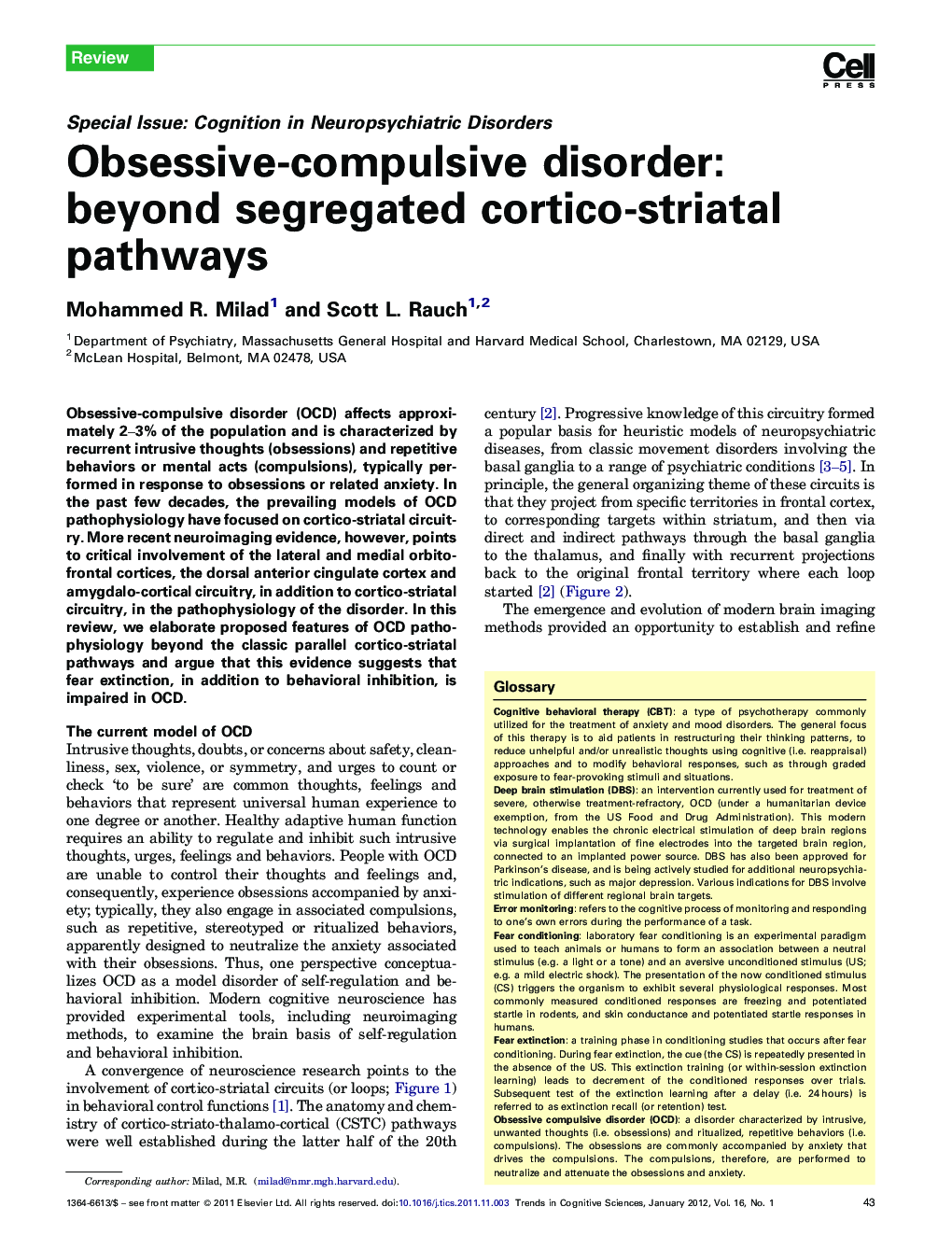| Article ID | Journal | Published Year | Pages | File Type |
|---|---|---|---|---|
| 141701 | Trends in Cognitive Sciences | 2012 | 9 Pages |
Obsessive-compulsive disorder (OCD) affects approximately 2–3% of the population and is characterized by recurrent intrusive thoughts (obsessions) and repetitive behaviors or mental acts (compulsions), typically performed in response to obsessions or related anxiety. In the past few decades, the prevailing models of OCD pathophysiology have focused on cortico-striatal circuitry. More recent neuroimaging evidence, however, points to critical involvement of the lateral and medial orbitofrontal cortices, the dorsal anterior cingulate cortex and amygdalo-cortical circuitry, in addition to cortico-striatal circuitry, in the pathophysiology of the disorder. In this review, we elaborate proposed features of OCD pathophysiology beyond the classic parallel cortico-striatal pathways and argue that this evidence suggests that fear extinction, in addition to behavioral inhibition, is impaired in OCD.
